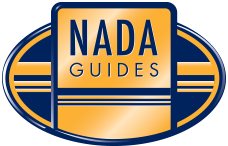
As outdoor recreation continues to gain popularity, many enthusiasts are exploring the allure of RV living, whether for short weekends or full-time adventures on the open road. One critical aspect of RV ownership that deserves attention is insurance coverage. Understanding the nuances of RV insurance can seem daunting, but it is essential to ensure both financial protection and compliance with legal requirements. This article explores the fundamentals of RV insurance, including types of coverage, key differences between policies for weekenders and full-timers, and common misconceptions.
Understanding RV Insurance Policies
RV insurance policies are structured to provide specific coverages, distinguishing them from typical auto insurance. Most RV insurance plans are assembled from standard forms by the Insurance Services Office (ISO), which helps create a baseline for coverages and pricing across different insurers. This consistency helps RV owners compare policies effectively.
For weekend RVers, a typical insurance policy focuses on first-party coverages, which protect the RV owner against financial loss due to damage to their vehicle. First-party coverages include collision and comprehensive policies. Liability coverage is tied to the vehicle towing the RV. For instance, if you are operating a towable RV, your tow vehicle’s liability covers incidents on the road. In contrast, motorhomes come with their own internal liability and coverage structures, similar to any other motor vehicle.
While it may seem sufficient to rely purely on the liability of a tow vehicle, those who own towable RVs are still encouraged to consider comprehensive RV insurance. The financial investment in an RV is often substantial, making any potential risk worth mitigating through appropriate insurance.
The DICE Framework
Understanding the specific details of an insurance policy is crucial. We can simplify this task using the acronym DICE, which covers the essential components of any typical insurance contract:
- D: Declarations Page - This section outlines the coverages purchased and their limits.
- I: Insuring Agreement - Here, the insurance company states its commitments to the policyholder, contingent on fulfilling the Conditions.
- C: Conditions - These are obligations that the policyholder must adhere to.
- E: Exclusions - This part details conditions or circumstances not covered by the policy.
Having a clear grasp of these sections not only facilitates better understanding but empowers RV owners to advocate for their needs when necessary.
Coverage for Full-Time RVers
Full-time RVers face unique challenges regarding insurance, primarily because they often lack a physical home to supplement their insurance coverage. For full-time travelers, securing a policy that offers comprehensive third-party liability coverage is essential. This is crucial in instances that aren't covered by the liability of their RV or tow vehicle, such as accidents occurring while stationary, including accidents involving pets or visitors at campgrounds.
If a full-timer spends at least 150 nights in their RV annually, they may exceed the limits of a typical weekend policy, necessitating a full-time coverage plan. Misrepresenting the use of an RV during the policy application can jeopardize claims, revealing the importance of aligning insurance policies with lifestyle.
Leading Insurers for Full-Time RVers
For those seeking full-time RV insurance, several reputable companies offer specialized policies. Prominent among these are Progressive, GEICO, National Interstate, and National General. Additionally, Good Sam is known to provide coverage via a partnership with National General.
Common Misunderstandings
Within the RV community, several myths surrounding insurance persist that can lead to misunderstandings. One prevalent misconception is that being overweight in an RV can lead to a denial of coverage in the event of an accident. However, under ISO form terms, insurance companies cannot deny claims outright based on the weight of a vehicle. While negligence can impact liability, it does not void coverage.
Furthermore, concerns regarding speeding or neglecting the weight rating of tires also fall under misinterpretations about insurance terms. It is crucial for RV owners to debunk these myths through a thorough reading of their insurance policies.
Conclusion
The world of RV insurance can seem complex, but full comprehension is necessary, especially for those embarking on a life of adventure in their vehicles. By grasping the different types of coverage available, knowing which policy fits one’s lifestyle, and steering clear of common misconceptions, RV enthusiasts can navigate their insurance landscape with confidence. Regularly revisiting policy details ensures that RV owners are equipped to protect their investment as they pursue grand adventures on the open road.





